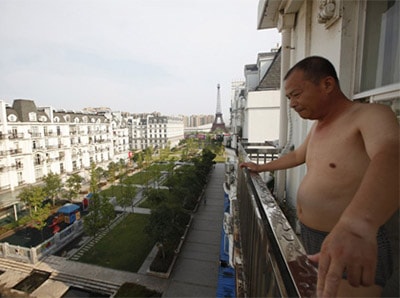
China’s 22% surge in loans to developers could be bad news to people hoping to sell off an overstock of homes
China’s economic maestros achieved a victory in the first quarter, as recovering home sales helped to rekindle real estate investment, and rebounding land sales helped to refill the coffers of local governments. However, the rally has raised questions about the health of the property sector, as the country continues to struggle with a glut of unsold housing.
The surge raises doubts among some analysts, as mainland leaders appear to have returned to the familiar tool of infrastructure investment to shore up sagging growth and government earnings.
Taxes on real estate and land-related transactions accounted for 16 percent of Chinese government revenue in the first quarter, according to Mingtiandi calculations based on government data. For the first 11 months of 2015, property investment accounted for 13 percent of China’s gross domestic product, Reuters reported.
Surge in Land Sales Could Mean Bad News Down the Road
In top level government meetings in December last year, China emphasized the need to bring down stocks of unsold homes to revive a property sector that accounts for an even bigger slice of municipal revenues than it does of nationwide productivity, and the authorities may have gotten results sooner than they had planned. “Local government revenues recovered and increased significantly due to the warming of real estate market in some locales and an increase of real estate related taxes.” China’s Ministry of Finance said this month.

China’s investment in real estate grew 6.2% in Q1, but many cities still face a surplus of unsold homes
Real estate investment in China nearly came to a halt last year. It grew only one percent in 2015 after expanding at a double-digit rate for the past decade. But a strong recovery in the first quarter picked up the slack as traditional industries and manufacturing continue to falter. That helped gross domestic product in the first quarter – which grew 6.7 percent–fall within the government’s targeted range.
However, empty homes across the country —a legacy of China’s stimulus plans when it went on an investment binge during the 2009 global financial crisis —have unsettled policy makers as they roll out new policies to encourage more home purchases. And this investment rebound appears to be out of sync with actual home sales in many Chinese cities and provinces.
Growing Investment Amid Slowing Sales in Inland Provinces
One likely cause of dismay for Chinese policy makers, as well as for developers, is the chasm between new project starts and property sales in March. Some regions, such as Xinjiang have seen new starts outstrip property sales by a large margin, according to a report by Bloomberg, citing data from Macquarie Capital Ltd.

Zhengzhou in Henan saw real estate investment grow 22.9% in the first quarter
Macquarie analysts told Bloomberg that the discrepancy between sales and new project starts would likely undermine Beijing’s goal of property destocking. Government data shows that China’s empty residential units reached 452 million square meters in 2015 — enough space to cover all of New York’s Long Island.
Even so, the daunting task of unloading empty homes does not seem to have dampened enthusiasm from Chinese lenders. The rebound was partly buoyed by the continuous credit support to property developers. By the end of March, Chinese banks had offered RMB 22 trillion in loans to property developers, up 22 percent year on year, highlighting government’s reliance on the sector for growth, according to data published this month by China’s central bank.
On average, real estate investment in the first quarter rose 6.2 percent nationwide compared to the same period last year, with central Chinese provinces registering the fastest growth rate at 9.5 percent. In Zhengzhou, capital of central Henan province, real estate investment surged 22.9 percent in the first quarter to RMB 37 billion. The city is among China’s infamous “ghost towns” filled with empty homes, despite official claims that progress has been made clearing out overcapacity.
Yan Yuejin, an analyst at Shanghai E-House Real Estate R&D Institute, said that cyclical factors contributed to the recent wave of new projects. “ From getting the land to acquiring the right to sell apartments, property developers usually will need 12 months, so essentially many have built projects to meet the housing demand of the next year,” Yan said.
Leave a Reply